A new precious exhibit
The unique exhibit was recently added to the Contemporary Museum of Calligraphy collection of rare books. Now everyone in Moscow can see the oldest printed book in the world.
Most people think that Johannes Gutenberg was the first man to print a book. Not too long ago people were sure the first printed book was the so-called “Gutenberg Bible” printed in Germany in the 15 century. As it turned out the first printed book was created in Korea in 1377 with a movable metal type. Jikji is the abbreviated title of a Korean Buddhist document that can be literally translated as “If you look straight at the soul of a man, you will see that it is the soul of Buddha”. UNESCO confirmed Jikji as the world oldest metalloid type. The type itself, Korean historians believe, was invented in Korea as early as 1200 AD and by the end of the XIV century book printing reached even provincial towns. Jikji was published in Heungdeok Temple in 1377 and written by the Buddhist monk Baegun, who served as the chief priest of Anguk and Shingwang temples in Haeju, and was published in two volumes in Seongbulsan in 1372.
In early April Mr. Shin Chun-Kyun, General Affairs Administration Assistant Director of the Cheongju Early Printing Museum and Mr. Kim Beyong-Gi, the Project Monitor have visited the Contemporary Museum of Calligraphy. The honorable guests examined the museum’s exposition and handed over a really valuable gift – a master copy of the ancient book that now has only 39 pages. The same copy is demonstrated at the Cheongju Early Printing Museum in Korea, and the original is kept in the National Library of France.
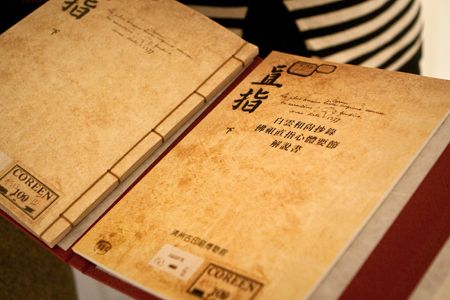 A replica of a book printed in the XIV century
A replica of a book printed in the XIV century
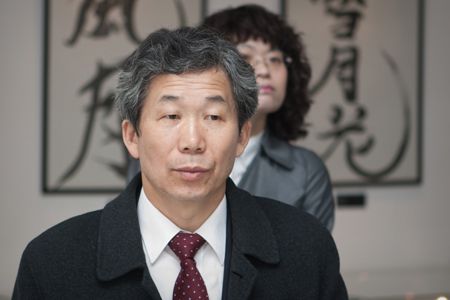 Shin Chun-Kyun, Cheongju Early Printing Museum Assistant Director
Shin Chun-Kyun, Cheongju Early Printing Museum Assistant Director
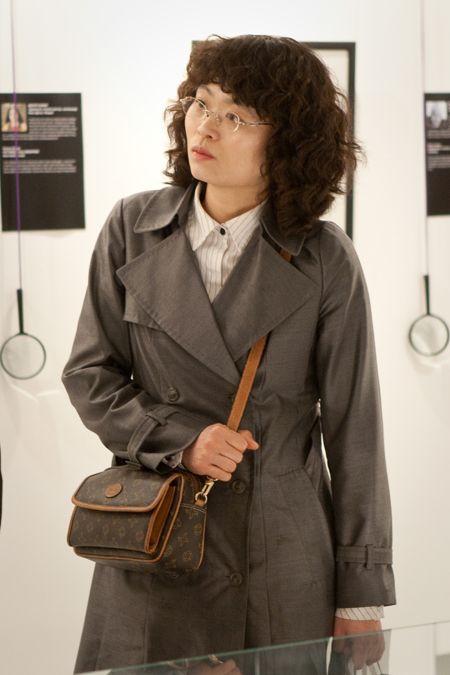 Kim Beyong-Gi
Kim Beyong-Gi
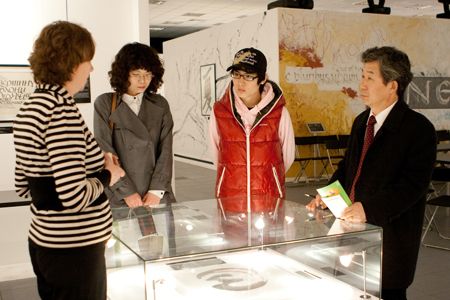 The guests savouring Kim Jong Chil’s Fruit
The guests savouring Kim Jong Chil’s Fruit
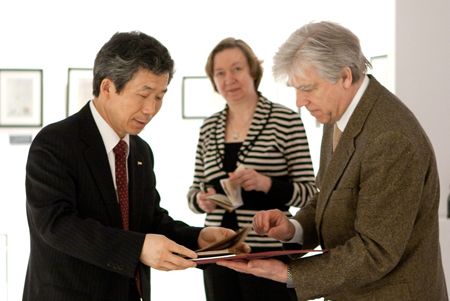 Presentation of the first printed book copy
Presentation of the first printed book copy
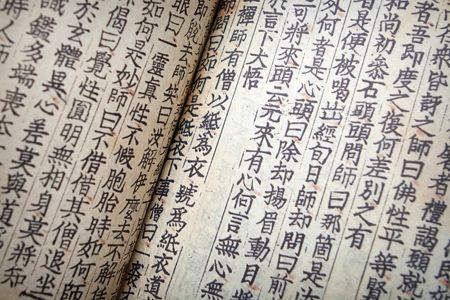 A page from “Jikji” book
A page from “Jikji” book
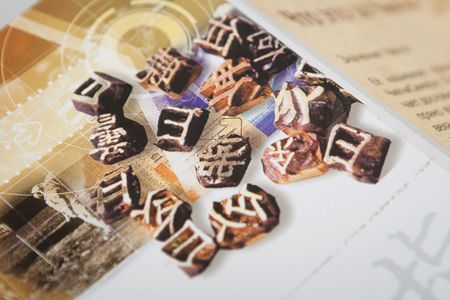 First metal artificial script, XIV century
First metal artificial script, XIV century